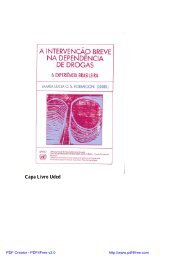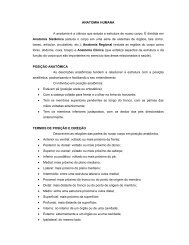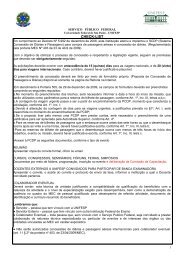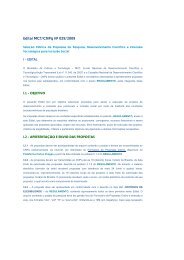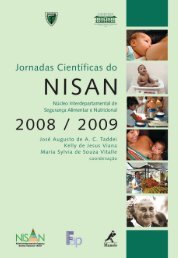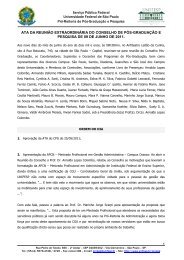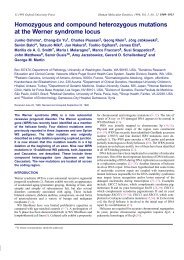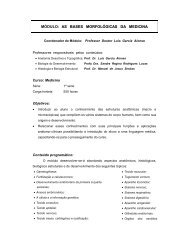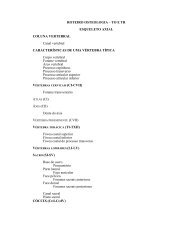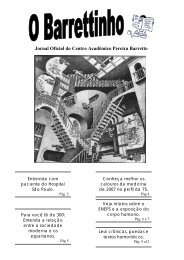flávia maria ribeiro vital efetividade e segurança da - Unifesp
flávia maria ribeiro vital efetividade e segurança da - Unifesp
flávia maria ribeiro vital efetividade e segurança da - Unifesp
Create successful ePaper yourself
Turn your PDF publications into a flip-book with our unique Google optimized e-Paper software.
Apêndice<br />
Apêndice – Protocolo publicado na Cochrane Library<br />
Non-invasive positive pressure ventilation (CPAP or BiPAP) in cardiogenic<br />
pulmonary oedema<br />
[Protocol]<br />
FMR Vital, A Sen, AN Atallah, MTT Ladeira, BGDO Soares, KEA Burns, C Hawkes<br />
The Cochrane Database of Systematic Reviews 2005, Issue 4 Copyright © 2005<br />
The Cochrane Collaboration. Published by John Wiley & Sons, Ltd. DOI :<br />
10.1002/14651858.CD005351 This version first published online: 20 July 2005 in<br />
Issue 3, 2005 Date of Most Recent Substantive Amendment: 09 May 2005<br />
This record should be cited as: Vital FMR, Sen A, Atallah AN, Ladeira MTT, Soares<br />
BGDO, Burns KEA, Hawkes C. Non-invasive positive pressure ventilation (CPAP or<br />
BiPAP) in cardiogenic pulmonary oedema. The Cochrane Database of Systematic<br />
Reviews 2005, Issue 3. Art. No.: CD005351. DOI: 10.1002/14651858.CD005351.<br />
Abstract<br />
This is the protocol for a review and there is no abstract. The objectives are as<br />
follows: The objective of this review is to determine the effectiveness and safety of<br />
NPPV compared to stan<strong>da</strong>rd medical therapy in adult patients with acute, or acute<br />
on chronic, cardiogenic pulmonary oedema with respect to mortality. As a<br />
secon<strong>da</strong>ry objective we will look at tracheal intubation rates, changes in blood<br />
gases and <strong>vital</strong> signs, hospital and intensive care unit (ICU) length of stay, effect of<br />
positive end-expiratory pressure (PEEP) levels, and bilevel NPPV vs CPAP, duration<br />
of therapy, treatment failure, complications, increase in frequence of acute<br />
myocardial infarction, compliance of patients in accepting the NPPV.<br />
Background<br />
Acute heart failure (AHF) is defined as the rapid onset of signs and symptoms<br />
secon<strong>da</strong>ry to abnormal cardiac function. Cardiac dysfunction can be related to<br />
systolic or diastolic dysfunction, to abnormalities in cardiac rhythm, or to pre-load<br />
and after-load mismatch. It is often life threatening and requires urgent treatment.<br />
AHF may occur with or without previous cardiac disease and can culminate in acute<br />
cardiogenic pulmonary oedema (ACPO), that is accompanied by severe respiratory<br />
distress, with crackles over the lung on ascultation, orthopnoea and O 2 saturation<br />
usually at



